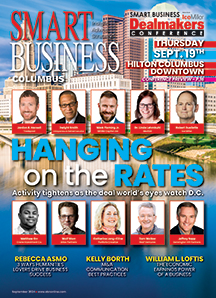If asked why they left their bank, business owners typically cite issues with fees or high interest rates.
“That’s where dialogue may begin with a business owner. But when you drill down, what’s at the crux of the matter is a lack of attention, communication and follow up,” says Jack Frencho, Wealth Management Advisor at The Private Client Reserve of U.S. Bank. “They feel as if they’re taken for granted and the bank no longer values the relationship.”
Smart Business spoke with Frencho about how knowing when it’s time for a new bank.
How would business owners know when they’re no longer getting the best service from their current bank?
Generally, business owners learn they may not be getting the most out of their bank after having a discussion with another business owner about the deal terms, rates or services that differ between them.
Otherwise, concern arises when business owners discover their bank officer is no longer proactive — there is no follow-up on requests, it takes several days or weeks to get a response. That will generally drive clients to scrutinize their fees.
Many times the perception business owners have of their bank is more qualitative than quantitative. They feel there are no more new ideas or solutions being presented to them by their banker that would help their business.
What must business owners do once they decide to switch banks?
Business owners should gather copies of all existing loan documents, statements and contracts that disclose the terms, fees and penalties of those arrangements before meeting with a new institution. Also have available statements outlining operating account, treasury management, payment solutions or credit card transactions. This allows for direct comparisons to any new offer, potential terms and structure of a relationship with the new bank.
Those who utilize a lockbox or similar service should be prepared with an analysis statement that will show an itemization of any transactions within that product.
What is the timeline for making a switch?
The time it takes to make the switch from one bank to the next varies. Generally, the process to switch without a lockbox would take 45 to 60 days.
Lockbox account services take more time to transfer because vendors need to be contacted and a new lockbox must be opened, so it’s advisable to keep the old one open for four to six months after the new lockbox is up and running.
The new bank should do most or all of the heavy lifting when it comes to the logistics of transferring accounts.
How can the business owner make a change without setbacks?
Many loans are fixed rate, which generally speaking, have a prepayment penalty clause built in. The new deal terms should offset some or all of the prepayment penalty. If the costs of moving the loan are substantial, the business owner may need to move all but that credit relationship to the new bank to mitigate the prepayment penalties.
Variable rate loans are not subject to a prepayment penalty, which should make the decision to move easier.
How can a business owner ensure the new banking relationship remains strong?
Going into the new relationship, set mutual expectations upfront, such as the level and frequency of conversation, service standards, and email and phone call response times.
It comes down to managing expectations around problem resolution. It’s advisable to meet no less than annually, preferable biannually, to go through a thorough relationship review.
Regular communication is central to a good banking relationship. A bank should make sure the business owner understands the particulars of the deal terms and the structure of credit facilities in place. That structure exists for certain reasons. A collateral shortfall, for instance, will necessitate specific rates or covenants. Your banker will help you understand why you’re getting a specific deal.
The relationship with one’s bank can and should be healthy, built on mutual trust and open and honest communication. If those elements aren’t present in the current relationship, it’s time to look elsewhere.
Insights Banking & Finance is brought to you by U.S. Bank

